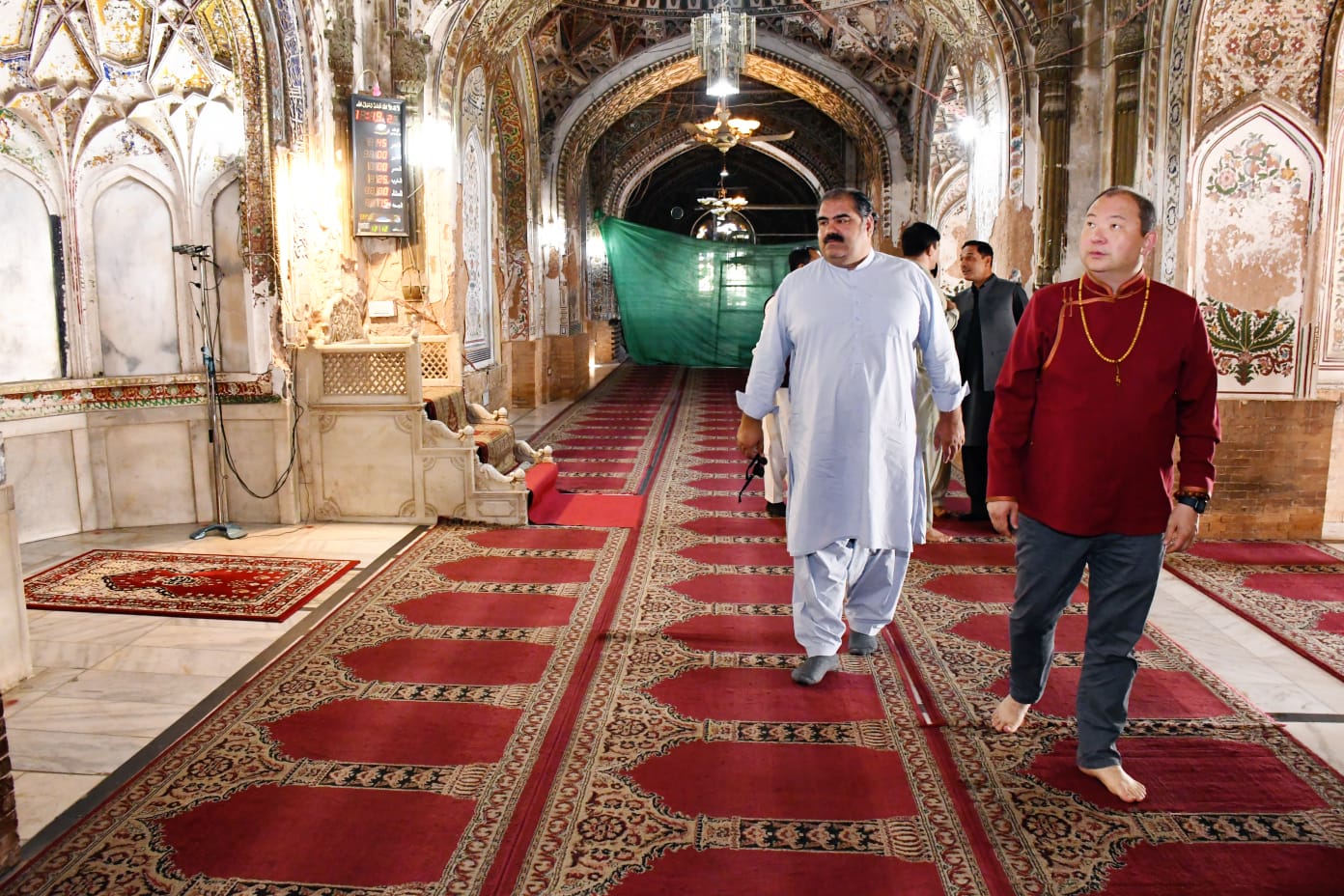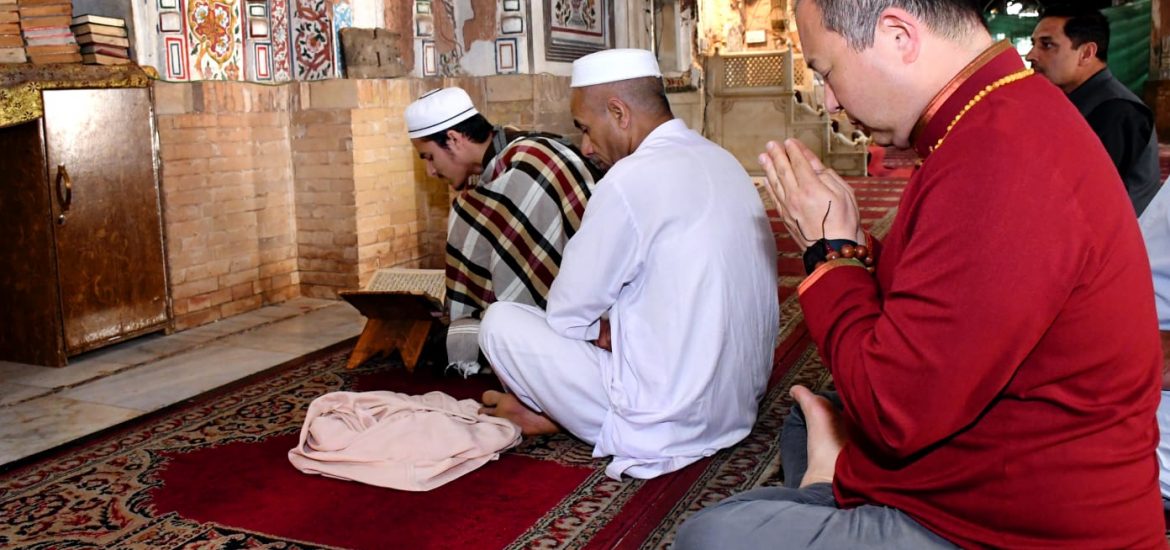The Mahabat Khan Mosque in Peshawar is Pakistan’s oldest surviving mosque still in use. It has a storied and venerable history. Built between 1660–70 by the Mughals under Shah Jahan, its famous white marble exterior is almost gloriously blinding in the Pakistani sun. Bizarrely, there is a claim circulating on the Internet that Sikhs were hung from its minarets in times of war – five from each tower to match the Sunni practice of five prayers each day. This is such an outlandish and over-the-top accusation, equivalent to accusing a religion of sacrificing children, that it deserved verification. I have tried to identify the source of this outrageous claim, and the only historical source to have alluded to some dark use of the minarets has been quoted on multiple websites, including Wikipedia and Medium. This is Sir F.W.R. Fryer’s Gazetteer of the Dera Ghazi Khan District: 1883, in which the then-settlement officer claimed that the minarets were used as a “substitute for the gallows” – while praising the mosque in the same sentence as the “finest public building in the city.” (289)
Not only does hanging bodies from a minaret in place of gallows sound extraordinarily impractical, but it also feels more likely that local anti-Muslim rumors had been fed to a British officer, who might or might not have had the linguistic or cultural knowledge to verify facts and parse truth from fiction. A much more likely account of interreligious conflict claims that the mosque was plundered and razed by anti-Islamic Sikhs in 1895, who then destroyed the minarets (the mosque restored in 1898).

So much for religious wars. The mosque, along with many other religious complexes in Pakistan, are now better known for promoting interfaith harmony. This month, the mosque had a special visitor: Telo Tulku Rinpoche, on his visit to Pakistan, joined his hosts from KPDOAM in walking through its hallowed halls. He also participated in that most critical of interfaith activities: with an open heart and mind, he joined the Naib Imam of the Masjid in prayer, for a moment entering the Islamic experience, even if not stepping into a Muslim’s shoes (which is a subtle but important difference).
Dr. Ali Arshad Khan accompanied the Buddhist dignitary, telling BDG that this was a heartening display of pluralism on part of Telo Rinpoche. Given how rare the opportunity is for Buddhist-Islamic dialogue, even in countries where Buddhist and Muslim populations live side-by-side (such as Indonesia and Malaysia), this was very much a heartfelt gesture by a Buddhist leader who has always placed interfaith relations at the heart of his activities.

This is not a surprise, given his former role as shajin lama of Kalmykia, which required him to be in contact with Orthodox Christians and other religions in Russia’s multicultural and multi-religious tapestry. One of my first pieces covering Telo Rinpoche, which arose from my 2015 visit to the Kalmyk republic, focused on how the apophatic leanings of Russian Orthodoxy could serve as “connective tissue” to the silent meditative tradition and Vajrayana dissolving of all into emptiness. He does not only see ecumenical outreach as a duty. My understanding is that he feels a genuine interest in learning about the stories and life-worlds of other faiths, just like his teacher His Holiness the Dalai Lama, who is also well-known for his dialogue with Islamic scholars.
With Telo Rinpoche unbound by his previous associations, his journey is only going to become more fruitful and beneficial for those that follow and rely on him. This trip to Pakistan is only the beginning of a fresh start, to what has already been a life of service to the Dharma.
Related features from BDG
The Way of the Bodhisattva: Telo Tulku Rinpoche’s 30 Years of Noble Service to the Kalmyk People
Emptiness and Fullness: Windows into Buddhist and Russian Orthodox Dialogue
Buddhistdoor View: Dialogues between Mahayana Buddhism and Orthodox Christianity
Related blog posts from BDG
Telo Tulku Rinpoche in Pakistan: Modern Leader Greets Ancient Echoes

This article was written in collaboration with the Digital Heritage Center of the Directorate of Archaeology and Museums, Khyber Pakhtunkhwa (KPDOAM)


